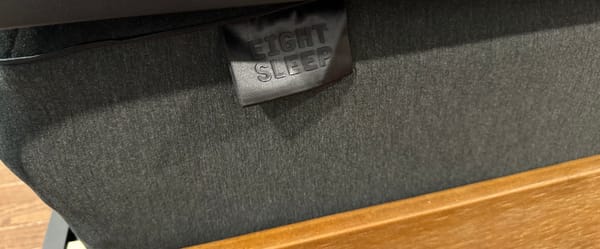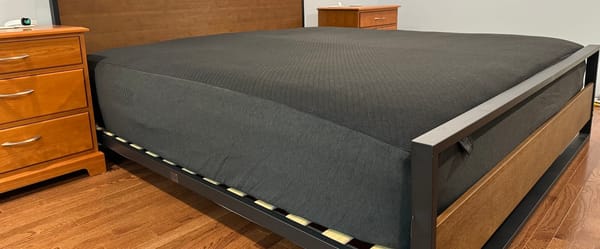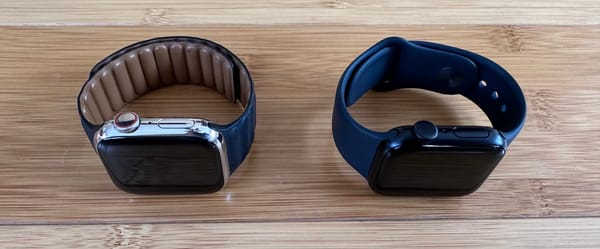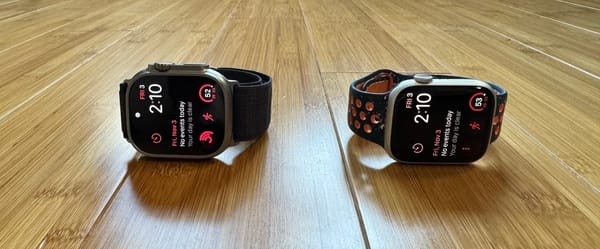Neato D7 vs. Roomba i7: How do they stand up in 2021?
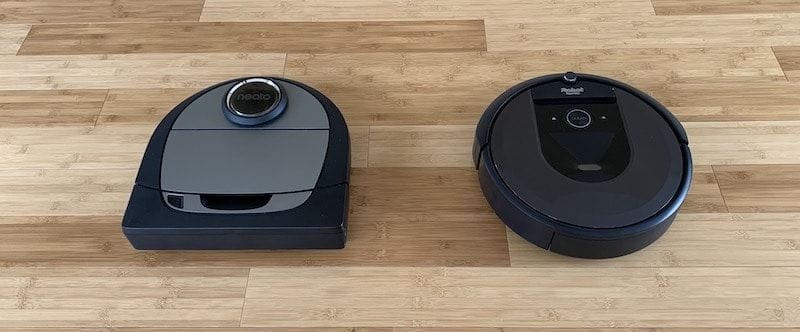
After months of testing, I determined Neato Botvac D7 is the better bet for people with mostly hard floors because of its efficiency.
However, Roomba i7 goes slightly deeper on carpets, and the optional Automatic Dirt Disposal Base and easier to clean brush will improve the lives of pet owners.
Want to learn how I reached this conclusion? Read on to see the detailed breakdown of navigation, performance, and automation that informed my overall impression.
Navigation
Neato D7
Neato uses SLAM technology, which is a better method than the “bump-and-run” method from traditional robot vacuums.
Your first run with Neato is a “mapping run” so it can learn the layout. It may be painful because the robot isn’t very smart, but if you make barriers, and use the included magnet strip, you’ll be fine. Just remember to set your “No-Go Lines” after you have a map.
Before Neato D7 learned the layout of my house, it repeatedly got stuck under a glass TV stand. Neato asks you to move it within two feet of its location, so the map doesn’t get messed up, but Neato went under the TV stand and got stuck four more times.
It’s shaped like a “D.” In my experience, Neato gets the edges of a room better than round vacuums.
The larger wheels on Neato help it climb things better and clear high thresholds.
Roomba i7
Out of the box, Roomba i7 is smarter than Neato and tends to get stuck less frequently (Neato makes up for this with software).
Roomba i7 uses odometry (number of wheel spins) and the cameras on top to sense the walls and create a map of your house. Everything works great as long as there’s light because the cameras can’t see at night or in dimly lit rooms.
Roomba i7 uses “iAdapt 3.0 Navigation with Visual Localization” for its mapping, which is an upgrade from “iAdapt 2.0” because the algorithm remembers your home’s layout and uses its previous maps to make adjustments to the route each time it runs.
Let Roomba do its thing and pray the algorithm figures things out. Roomba i7 is the smartest Roomba on the market and makes adjustments to its route based on previous runs. It got stuck under my swivel chair twice, then approached it more cautiously and never got stuck again.
Roomba i7 finds the base better than previous Roomba vacuums.
Roomba’s first run never picks up debris as well as Neato. Roomba eventually produces the same results as Neato with multiple passes.
It doesn’t get the edges as well as Neato, due to its circular shape.
It doesn’t climb over thresholds as well as Neato, due to it being lower to the ground.
Mapping
Neato D7
Neato uses “LaserSmart Mapping” technology to sense walls. Because it uses lasers rather than a camera, it can run flawlessly without a light source.
Once you make your floor plan map, keep Neato out of particular areas (e.g., rooms you don’t want to be cleaned, places it’d get stuck, near loose cords or cable, near pet food dishes, shoe mats, etc.) by drawing virtual lines in the app. Neato was the first company to release No-Go Lines and they are a game-changer because your vacuum will never get stuck.
It can be hard to place the lines in the app because you won’t know precisely where to put them. If your robot is getting stuck in the same place, it would be great for it to mark that on the map, but it doesn’t.
Three different floor plans can be stored. Get an additional base for $40 for each floor to make your life easier because Neato won’t recognize your house if the base gets moved even a few inches and it’ll be forced to remap everything.
Once Neato has a map of your home, it can do “Zone Cleaning” to only clean a specific room or area, rather than a full cleaning cycle.
Roomba i7
Unlike Neato, Roomba needs a few “Training Runs” where it drives around with the suction and rollers turned off. After the training runs, “Imprint Smart Mapping” lets you add dividers and labels in the app to your home’s map to create different rooms.
You can store up to 10 floor plans and because Roomba uses a camera for mapping rather than lasers, you can move the base to wherever you want and it’ll still remember your home’s layout, which is an advantage over Neato.
When I originally reviewed Roomba i7, it didn’t have a comparable feature to Neato’s No Go Lines. But a year after its release, Roomba came out with Keep-Out Zones. Once Roomba finishes the training runs, go into the app, and add virtual boxes around areas where Roomba should avoid.
There’s a potential downside to Roomba using a camera while Neato uses lasers: iRobot’s use of your mapping data is a bit suspicious. Their executives haven’t dismissed the idea of selling your data to other companies.
Hypothetically, Amazon could acquire Roomba’s data of your house, see the same sneakers by the door for six months, then target you with advertisements for shoes. Or maybe there’s an empty space in your living room, and Amazon knows a shelf that would fit there perfectly.
To be clear, Roomba is NOT currently selling your data! If they decide to do something with the mapping data, you’ll be notified and have an option to opt-out. But the idea of it is creepy. Don’t dismiss what tech companies do with your data.
Suction
Neato D7
Summary: Neato D7 runs its cycle and hits every spot a couple of times, but it doesn’t pay attention to what’s on the floor, which actually makes it more efficient than Roomba. It works well on all floor types, but its efficiency shines on hard floors because it picks up 15% more debris in the same period.
Modes:
- Neato has an “Eco” mode that’s quieter than “Turbo” mode and allows Neato to run longer. I didn’t see a difference between the settings in my testing, so I’d recommend sticking with “Eco.”
- Even while in “Turbo” mode, Neato cleans my entire first floor (500 square feet) in under an hour with 50% battery left.
- There’s an “Extra Care” mode that slows the vacuum down when it senses objects. I didn’t find it necessary because Neato barely taps the edges and is more gentle than Roomba in standard mode.
- Set it to “Spot” clean, which will do about 5’ x 5’ square, but it can be increased to a 13’ x 13’ square too.
Real-world testing:
- Neato is superior to Roomba on hard flooring. On the first sweep, Neato gets significantly more debris than Roomba. Roomba tends to get caught up with its dirt detection sensing, while Neato keeps chugging and is more efficient. (See my test results above).
- Neato and Roomba perform similarly on carpet.
- When comparing robots only, Neato is better for pet owners because of the bigger bin size, but the brushes are harder to cleanout.
Roomba i7
Summary: Roomba i7 works fine on hard floors, but it needs more time to get the job done because it has a Dirt Detect system that goes over a spot with debris until it doesn’t sense the dirt. Roomba slightly outperforms Neato on carpet after a full cycle. After two sweeps of an area on any surface, Roomba i7 will collect less dirt and debris than Neato D7 on any surface, but Roomba tends to do more than a couple of passes, and the result is similar to Neato.
My fixed testing:
- Test #1: Let the robots run in an enclosed 100-square-foot area of wood floor with 50 grams of rice spread evenly for five minutes. Results:
- Neato D7 30 grams.
- Roomba i7 25 grams.
- Test #2: Let the robots run in an enclosed 100-square-foot area of wood floor with 50 grams of rice spread evenly until their cycle is finished. Results:
- Neato D7 50 grams completed in 12 minutes.
- Roomba i7 50 grams completed in 22 minutes.
- Test #3: Let the robots run in an enclosed 50-square-foot area of medium-pile carpet with 50 grams of rice spread evenly for five minutes. Results:
- Neato D7 48 grams.
- Roomba i7 30 grams.
- Test #4: Let the robots run in an enclosed 50-square-foot area of medium-pile carpet with 50 grams of rice spread evenly until their cycle is finished. Results:
- Neato D7 48 grams completed in 5 minutes.
- Roomba i7 50 grams completed in 9 minutes.
Runtime
Neato D7
The battery is 4,200mAh and lasts 120 minutes. My real-world tests match and surpass the 120 minutes on wood floors. It takes 150 minutes to recharge the battery.
When Neato is getting low on battery, it’ll do a “quick boost charge” to give it the amount of juice it needs to finish the job, rather than going back to the base to charge for two hours like Roomba.
It took Neato D7 an average of 47 minutes to clean my entire first floor.
Roomba i7
It has a 3,000mAh battery with a listed runtime of 75 minutes.
When the battery runs low, Roomba goes back to the base to charge, then finishes the spots it hasn’t hit yet.
It took Roomba i7 an average of 50 minutes to clean my entire first floor.
Roomba i7 takes twice as long as Neato to clean an area with the same effectiveness.
Design
Neato D7
The filter is funky because it has a fine mesh in front of it and dirt gets stuck behind the mesh, but it makes cleaning the filter much easier because the big pieces of material stay out.
The charging base is nicer and heavier than the typical Roomba base and it stays in place. You can also tuck the cord inside the base making it look more appealing and reducing the risk the robot will trip over the cable.
The dustbin is easy to empty and clean because the filter pops out easily. And it’s 700 ml, which is twice the size of Roomba’s bin.
The main brush is huge and measures 11″ helping Neato to get more debris in the first run. It’s easy to pop out and clean but due to its design, hair will get wrapped around it and it will need to be cleaned every couple of weeks.
Roomba i7
The dustbin is 450ml and half the size of Neato’s. It’s also harder to clean. The bin size is a deal-breaker if you have pets who shed because the bin will fill up too quickly. (Pet owners should get Roomba i7+. Read more below.)
The charging base is poorly made. The long cord gets in the way of docking the robot, and because it’s so light, it’s easy to move.
It has “Tangle-free Dual Multi-Surface” rubber brushes that are easy to clean. In my experience, human and pet hair doesn’t get wrapped around the rollers as much as Neato’s.
Automation
Neato D7
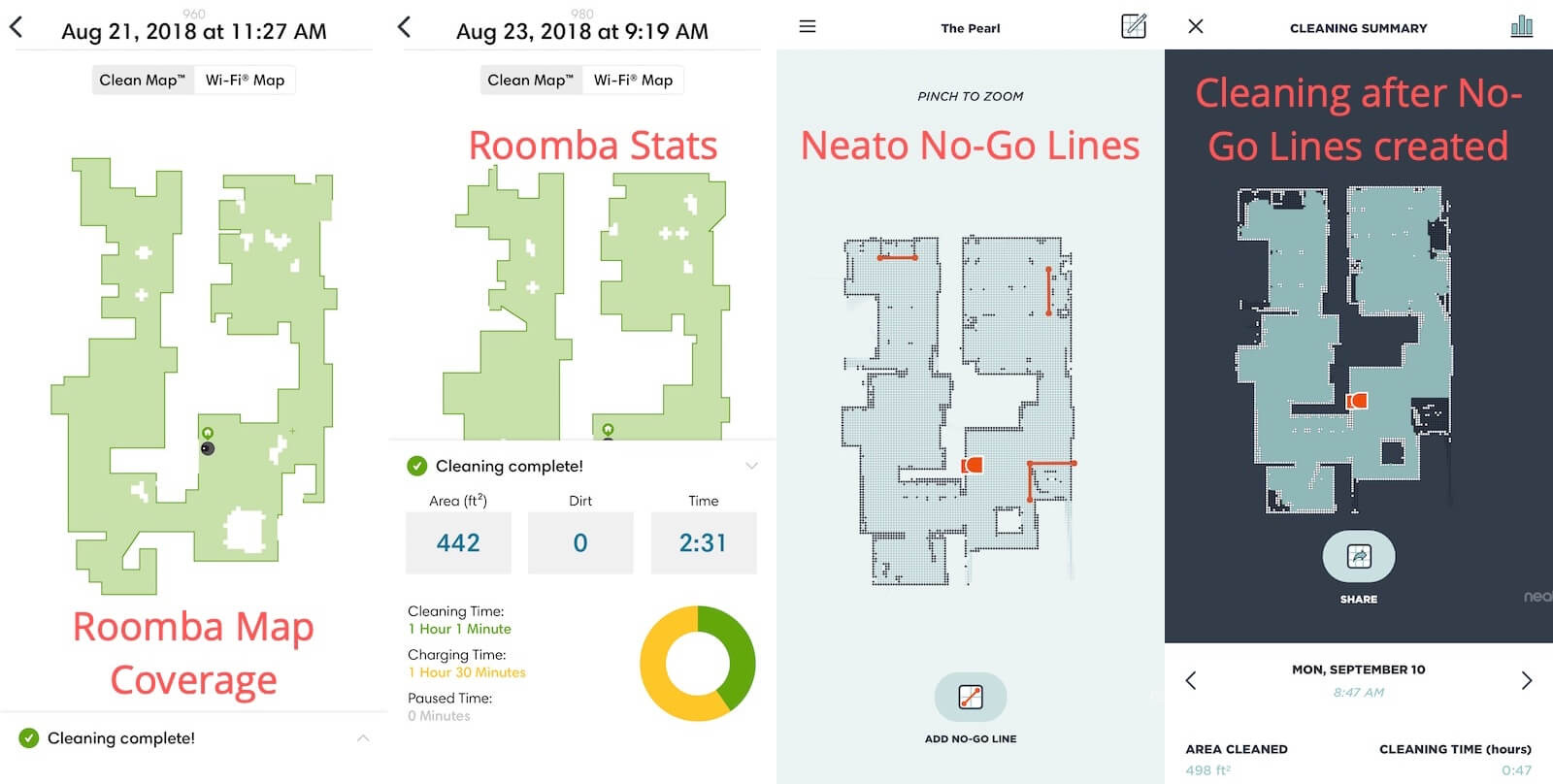
The app design is excellent and feels fresh. It looks different than most apps, but it’s intuitive. An example of a nice touch, when you tap on the battery icon, it tells you the exact percentage remaining and how long it’ll run based on its current suction mode.
I’ve purchased Neato D7 twice and had trouble syncing it with my WiFi both times. Once the setup was done, everything was perfect.
You can set reminders for maintenance (brushes and filters) and how frequently you’d like to receive them.
When creating a schedule, you get to choose which zones you want to be cleaned and your preferred cleaning mode.
Neato is compatible with Google and Alexa. You can say things like “Alexa, ask Neato to start cleaning” or “Hey Google, ask Neato to return to base.” Unfortunately, it can’t clean a specific zone via a smart assistant.
There’s an IFTTT page with awesome options. My favorites are having Neato run as soon as you leave your house and having it dock as soon as you arrive home so you don’t have to listen to it run.
Roomba i7
During scheduling, pick "Clean All" or select specific rooms to be cleaned. For example, schedule it to clean the living room and dining room each Monday and Wednesday, then clean the bedrooms on Tuesday and Thursday. There are endless possibilities, and it’s a great way to prioritize rooms that have more foot traffic.
Roomba makes a noise when you change the schedule from the app, which is helpful. Although I never had issues with Neato’s scheduling, I’m always curious if Neato got the signal.
There are maintenance reminders, like when to replace the filters or brushes based on how long Roomba expects them to last.
It works with Alexa and Google Home. Say things like, "Alexa, ask Roomba to go home."
Roomba has an IFTTT page with cool options, like having Roomba pause its run when you receive a phone call.
iRobot sells a package with the Roomba i7 robot and the “Clean Base Automatic Dirt Disposal” for $1,100 and is called “Roomba i7+”. Or buy the clean base separately at another time for $300.
The Clean Base is an oversized dock that sucks up the debris from the bin and puts it in a disposable bag that holds 30 robot bins. While the base is huge and sounds like a rocket taking off, it’s an amazing first step into fully automating your cleaning.
Because pet hair accumulates quickly in the bin and Roomba’s bin is small, your robot may only get through a quarter of its cycle before the bin is too full to continue. The automatic emptying base is crucial for pet owners with shedding pets.
Roomba i7+ is a must-have for pet owners who can afford it.
Which is best for you?
Neato D7
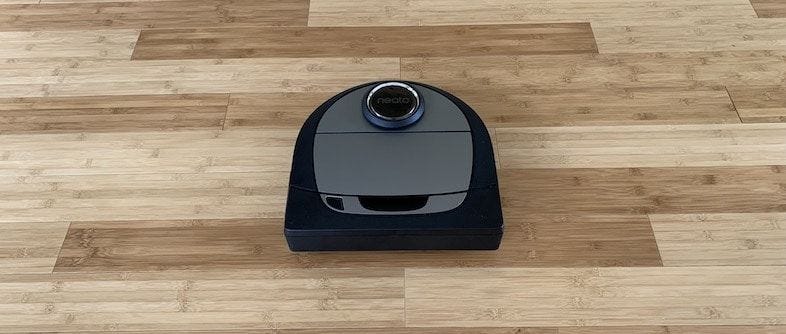
- Navigation (A)
- Performance (A)
- Automation (B)
Get Neato D7 if you want to consistently clean every spot in your home (usually in one run), regardless of floor type, without a chance of getting stuck. You can't tell it to clean individual rooms like Roomba, but the No-Go Lines are its best feature.
Roomba i7
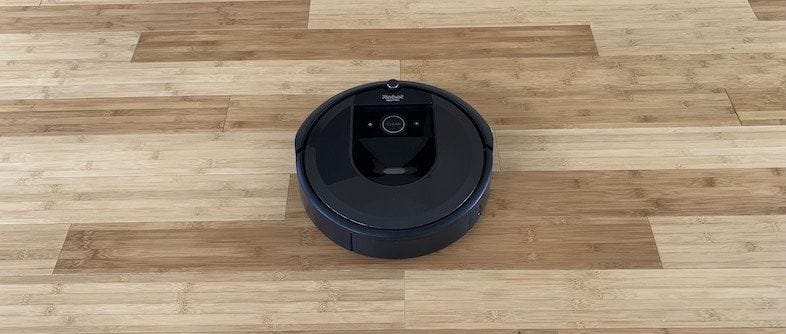
- Navigation (A)
- Performance (A-)
- Automation (A)
Get Roomba i7 if you have pets who shed and want to spend extra for the self-emptying base (Roomba i7+). It won't get stuck due its algorithm and Keep Out Zones, but it's not a great without the self-emptying base because the dustbin is small.
Looking at similar options
Neato D4 is usually around $300. It has a shorter runtime (75 minutes), a terrible dustbin, no zone cleaning, no side brush, and it stores just one floor plan. I tested this unit for a month, and while I don’t love the sacrifices, it’s a more affordable way to get “No Go Lines.”
Neato D6 is similar to Neato D7, but it can’t do “Zone Cleaning.”
Roomba i3+ is a more affordable way to get the self-emptying base, but unfortunately, you’ll have to sacrifice “Keep Out Zones” and some battery runtime. I wouldn’t touch this model due to the lack of “Keep Out Zones.” Robot vacuums aren’t very smart without some version of this.
Roomba s9+ has everything that Roomba i7+ offers with 4x extra suction power. I haven’t tried this model yet, but it appears to be the best iRobot has ever made a good bet if you have no budget constraints.

